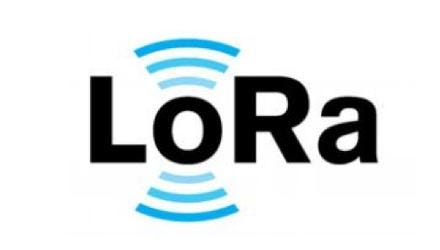Industry Insights
Comparison of LPWAN Technologies - Which is Best for Me?
An unbiased comparison of LPWAN technologies including SigFox, LoRaWAN, Symphony Link, Ingenu RPMA, and Weightless.
An unbiased comparison of LPWAN technologies including SigFox, LoRaWAN, Symphony Link, Ingenu RPMA, and Weightless.
The comparison of LPWAN technologies presented in this blog post is based on publicly available research and should not be taken as a recommendation for using one service over another. Given the pace of change within this sector, I recommend that any technical questions be directed to the vendors mentioned below.
These LPWAN technologies and standards are under active development or deployment. Although there are others such as LTE-Cat M, IEEE P802.11ah (low power WiFi), and Dash7 Alliance Protocol, they have not gained as much traction as those mentioned above.
The following sections will briefly discuss each of the technologies and list pros and cons of each method.

SigFox arguably has the most traction in the LPWAN space due to its successful marketing campaigns in Europe. It also boasts a great ecosystem of vendors including Texas Instruments, Silicon Labs, and Axom.
The SigFox LPWAN technology is an example of using a slow modulation rate to achieve longer range. Due to this design choice, SigFox is an excellent option for applications where the system only needs to send small, infrequent bursts of data. Possible applications include parking sensors, water meters, or smart garbage cans. However, it also has some drawbacks. Sending data back to the sensors/devices (downlink capability) is severely limited and signal interference can become an issue.
+In deployment with a lot of traction+Great relationship with vendors (TI, Silicon Labs, Axom)+Power-efficient: no RX circuitry so sensors consume less energy+Great for simple monitoring & metering applications
-Not an open protocol, limited to SigFox networks-Minimal Built-in Security: 16 bit encryption-Limited use cases: not appropriate for use cases where downlink communication is important-FCC regulation: SigFox transmission is too long for the limit set by the FCC under Part 15. So the architecture in the US is significantly different than the existing, tested ones in Europe.-Potentially high levels of RF interference

LoRaWAN is an open-standard governed by the LoRa Alliance. However, it’s not truly open since the underlying chip to implement a full LoRaWAN stack is only available via Semtech. Basically, LoRa is the physical layer; the chip. LoRaWAN is the MAC layer; the software that’s put on the chip to enable networking.
The functionality is similar to SigFox in that it is primarily for uplink-only applications (data from sensors/devices to a gateway) with many end-points. Instead of using narrowband transmission, however, it spreads out information on different frequency channels and data rates using coded messages. These messages are less likely to collide and interfere with one another thereby increasing the capacity of the gateway.
+Large, influential members including Cisco, IBM, Kerlink, Actility, and SK Telecom+Better security: AES CCM (128-bit) encryption and authentication+Flexible packet size defined by the user+In deployment, most popular along with SigFox (over 100 commercial operators)
-Not ideal for private/customer-deployed networks-Downlink capability is still limited-Limited to Semtech-approved vendors-ALOHA-type protocol makes validation/acknowledgment difficult; can have error rates over 50% in extreme cases

Link Labs is a LoRa Alliance member and thus uses the LoRa chip mentioned above. However, instead of using LoRaWAN, Link Labs has built a proprietary MAC layer (software) on top of Semtech’s chips called Symphony Link.
This proprietary layer adds some additional features including: guaranteed message receipt, firmware upgrade over-the-air, removal of duty cycle limit, repeater capability, and dynamic range.
+High sensitivity (same as LoRaWAN): -137 dBm+Flexible frequency/no duty cycle limit: 150 MHz to 1 GHz (both unlicensed and licensed)+Added features to LoRaWAN protocol such as the ability to operate without the network server
-Requires Symphony Link software (added dependency)-Smaller community of users

As a founding member of the IEEE 802.15.4k task group (which was dedicated to low-energy infrastructure monitoring), Ingenu put in a tremendous amount of effort in developing its LPWAN technology stack, whereas SigFox and LoRaWAN groups have focused on faster time to market.
Due to its architecture, it has a superior uplink and downlink capacity than other models. It claims to have better doppler, scheduling, and interference robustness. It operates in the 2.4 GHz spectrum, which is globally available (used for WiFi and Bluetooth). This means that there are no architecture changes per region like SigFox.
According to its internal studies, RPMA has a significantly higher link budget (177 vs. 149 and 157 for SigFox and LoRa respectively), meaning better coverage.
+Good technology stack+High coverage and robustness+Gaining commercial traction despite late market entry
-Uses 2.4 GHz spectrum so more interference from WiFi and Bluetooth-Structural penetration (buildings, walls, etc.) isn’t as good at the higher 2.4 GHz frequency. However, with its higher link budget this may not be an issue.-Uses more processing power so may not fit the long-battery life criteria

Weightless is the only truly open-standard that operates in sub-1 GHz unlicensed spectrum. There are three versions of Weightless that serve different purposes:
Weightless-W: leverages whitespace (unused local spectrum in licensed TV band)Weightless-N: unlicensed spectrum narrowband protocol born out of NWave’s technologyWeightless-P: bidirectional protocol born out of M2COMM’s Platanus technology
Weightless N and P are the more popular options since Weightless-W has a shorter battery life.
Nwave is very similar to SigFox in terms of functionality, but boasts a better MAC-layer implementation. It claims to use “advanced demodulation techniques” to allow its network to coexist with other radio technologies without additional noise. Like SigFox, it’s best for sensor-based networks, temperature readings, tank level monitoring, smart metering, and other such applications.
+Great for sensor networks+Good urban range+Open standard
-No downlink capability-Very slow (100bps)-Requires a temperature compensated crystal oscillator (TCXO)
This standard uses FDMA+TDMA modulation in 12.5 kHz narrow band (greater than SigFox but less than LoRa). It also has an adaptive data rate, similar to Symphony Link (200 bps to 100 kbps). The sensitivity is quite high, -134 dBm at 625 bps and supports both PSK and GMSK modulation.
Weightless-P makes sense for private networks, more sophisticated use cases, and cases in which controlling uplink data and downlink data is important.
+Bi-directional communication+Adaptive data rate allows greater flexibility+Open standard
-Limited hardware availability-Less scalability than Weightless-N due to wider channel-Limited communications range
If you want a more in-depth look at LPWAN technologies, check out our white papers.